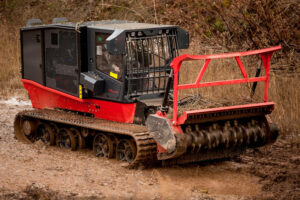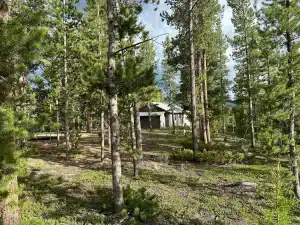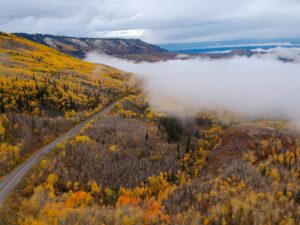
What is Brush Control?
Brush control for land management is the practice of controlling the growth and spread of woody vegetation, such as shrubs and trees, on a piece of land. It is a critical part of land management, especially in areas with high biodiversity and ecological sensitivity, as uncontrolled brush growth can lead to degradation of natural habitats, soil erosion, and increased risk of wildfires.
How Do You Control Brush?
Brush control can be achieved through various methods, including manual cutting and removal, herbicide application, and mechanical methods such as mulching and mowing. Each method has its advantages and disadvantages and is chosen based on factors such as the type of vegetation, the size of the area, and the desired outcome.
What Machines Are Used For Brush Control?
There are several machines and equipment that can be used for brush control depending on the size of the area, the type of vegetation, and the desired outcome. Here are some of the most common machines used for brush control:
- Forestry mulchers: These are powerful machines designed to clear large areas of brush, small trees, and other vegetation. Forestry mulchers use rotating cutting heads with sharp teeth to grind up the vegetation into small pieces that can be left on the ground as mulch.
- Brush mowers: These machines are designed to cut down and clear brush and other vegetation. They have a heavy-duty cutting blade that can cut through thick brush and are often used for maintaining trails and clearing smaller areas.
- Rotary cutters: These machines are similar to brush mowers, but they have a more rugged design and can handle tougher terrain and thicker vegetation. Rotary cutters can be mounted on tractors and are often used for clearing larger areas of brush and overgrown fields.
- Chainsaws: Chainsaws are handheld machines with a chain that rotates around a guide bar to cut through branches and trees. They are often used for manual brush control and can be useful for removing individual trees or for cutting through thicker brush and vegetation.
- Herbicide sprayers: Herbicide sprayers are machines that are used to apply herbicides to vegetation to control their growth. They can be mounted on tractors or used manually and are often used for selective brush control, such as removing invasive species.
The choice of machine for brush control depends on several factors, including the size and location of the area to be cleared, the type of vegetation, and the desired outcome. A professional land management company can help determine the best machine and method for brush control based on these factors.
Brush Control Strategy
Effective brush control for land management requires a long-term strategy that considers the ecological impact, cost, and practicality of different methods. Proper brush control can enhance the overall health and productivity of the land, protect natural resources, and provide a more aesthetically pleasing landscape. It is an essential aspect of sustainable land management practices that ensure the long-term health and productivity of natural ecosystems.
Brush Control For Fire Mitigation
Brush control for fire mitigation refers to the practice of reducing the fuel load in areas that are susceptible to wildfires. Brush, shrubs, and other vegetation act as fuel for fires, and controlling their growth and spread is an important aspect of fire prevention and mitigation.
Effective brush control for fire mitigation involves removing or reducing the amount of flammable vegetation, particularly near homes, buildings, and other structures. This can be achieved through various methods, including manual cutting, mowing, mulching, and controlled burning.
Mechanical methods such as mulching are particularly effective in reducing the fuel load and mitigating the risk of fires. Mulching involves grinding up brush and other vegetation into small pieces, which can then be spread out over the ground to create a protective layer. This layer of mulch helps to retain moisture, prevent erosion, and reduce the amount of fuel available to a fire.
Brush control for fire mitigation is particularly important in areas with a high risk of wildfires, such as those with a dry climate or those prone to lightning strikes. It is also important for homeowners and land managers to be aware of local regulations and guidelines for brush control to ensure that their practices are safe and effective.
Overall, brush control for fire mitigation is an important part of ensuring the safety of homes, buildings, and natural ecosystems. By reducing the fuel load and minimizing the risk of fires, we can help protect our communities and the environment.
Looking For Brush Control Services?
At Bear Claw Land Services, we specialize in providing professional brush control services for residential, commercial, municipal, and government properties. Our state-of-the-art forestry mulching equipment allows us to clear your land quickly and effectively, without leaving behind any debris or damaging the soil — all while returning necessary nutrients back into the earth.
Give us a call today or fill out the contact information form to schedule a free estimate today!




